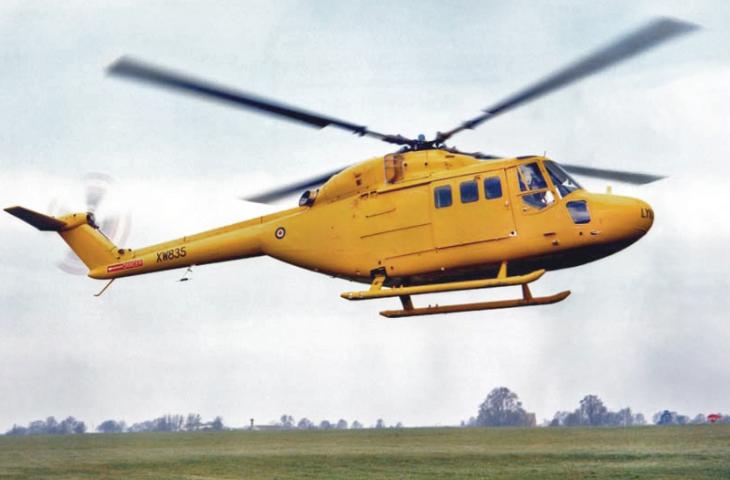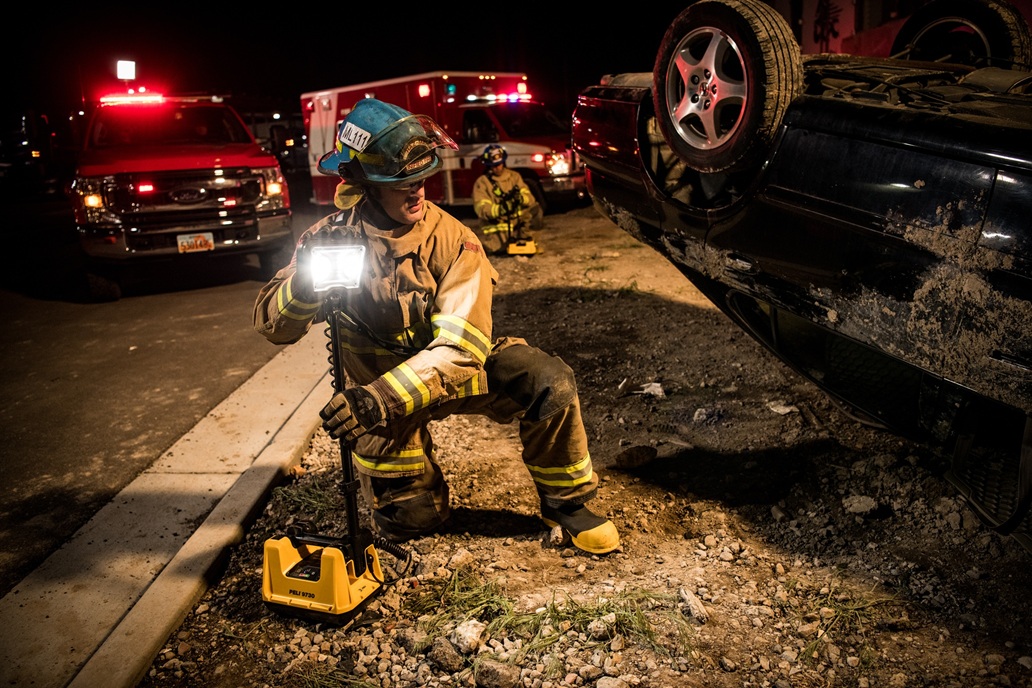Lynx helicopter marks 50 years since maiden flight

Above:
The Lynx first flew, in Yeovil, on 21st March 1971.
Courtesy Leonardo
The now-iconic aircraft, piloted by Ron Gellatly, completed two short flights of 10 minutes and 20 minutes respectively.
In addition to the Chief Test Pilot, his Deputy, Roy Moxam occupied the co-pilot’s seat, and Dave Gibbings flew as the Flight Test Engineer, responsible for instrumentation management, stress data monitoring, and back-up observations.
This landmark marks the 50th anniversary of Leonardo stepping into the leading position in this size/weight category in the helicopter market. The Lynx’s design and further development has met operators’ demands and changing requirements on land and at sea, which has led to the introduction of several variants in line with newly emerging technologies. The Lynx legacy also strongly contributes to the protection of the mainland and surrounding waters in the UK, ready to counter any potential threats in the maritime environment, in addition to performing in a combat helicopter role among others.
More than 500 aircraft in this class have been built, serving operators worldwide. There are nine customers still using the aircraft today for missions such as anti-surface warfare, anti-submarine warfare, battlefield, search and rescue, coastal protection, light utility amongst many others. Current operators of Lynx variants include the Brazilian Navy, Royal Malaysian Navy, and South African Defence Force.
The Brazilian Navy has been operating Lynx helicopters for more than four decades. At the end of last year in the UK, the Brazilian Navy and Leonardo completed the Factory Acceptance Test for the fourth out of eight upgraded Super Lynx Mk21B helicopters. Leonardo continues to support its global customer base that still operates the Lynx.
Leonardo at its Yeovil site is currently upgrading five Lynx MK95A aircraft for the Portuguese Navy. Modernisation work includes new engines, a new glass cockpit with Integrated Display Units amongst many other technologies.
The origins of the Lynx development started as part of an Anglo-French three aircraft programme. The basic Lynx development was carried out utilising five prototype aircraft, each of which was painted a different colour: yellow (XW835), grey (XW836), red (XW837), blue (XW838), and orange (XW839). The early flight test programme involved 13 aircraft.
In March 1972, the fourth Basic aircraft flew for the first time and it included the first 'Monobloc' rotor head, this was the standard chosen for production. The production rotor head would feature a central hub with four integral flapping elements forged from a single block of titanium, known as the ‘Monobloc’ head. The first production Naval Lynx (XZ227) flew for the first time on 10th February 1976, and the first delivery to the Royal Navy was made on 8th July 1976.
The Royal Netherlands Navy (RNN) ordered the Lynx before the UK trials were complete and the first Lynx Mk 25 flew in September 1976. The RNN aircraft were delivered in parallel with the Royal Navy aircraft and the Lynx entered service with the Royal Navy on 26th January 1978. The British Army Air Corps started to receive deliveries the following June, and by the end of the year the Lynx was deployed in Germany.
The Lynx featured new technologies at the time including the British Experimental Rotor Programme (BERP) blades able to increase maximum speed and lifting capabilities, later adopted also for all Lynx/Super Lynx variants and for the AW101. The iconic aircraft broke the world speed record 35 years ago on 11 August as the so-called G-Lynx reached speeds of 249 mph/216 knots/400 km/h over the Somerset skyline.
The AW159 represents the most recent capability offered by Leonardo in this market segment, continuing its leadership. With its fully integrated avionics and mission suite, coupled with a tactical processor and Military derived Human Machine Interface, the AW159 delivers advanced situational awareness in both the Maritime and Land environments. It is designed to operate safely from the smallest ships decks in the harshest environment of poor weather and high sea states, whilst delivering high availability for immediate mission prosecution. The AW159 is not only key to the protection of today’s and tomorrow’s UK Royal Navy vessel fleet but is also in-service with export customers delivering multi-role capability for surface and sub-surface operations. For the UK Army it is an integral part of the 1st Aviation Brigade in the Strike Coordination and Reconnaissance role with utility across the spectrum of operations.












